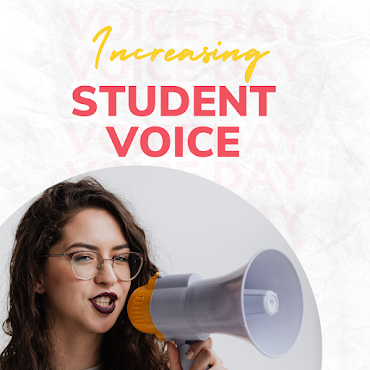Student voice is an essential element of a successful classroom. It empowers students to take ownership of their learning, develop critical thinking skills, and improve their confidence. Technology tools can be an effective way to increase student voice in the classroom. Now is the perfect time of year to try out some new or old tech tools. It's also a great idea to collect some data on what tools students enjoy using so that you can shape your class for the next year!
What is student voice?
Student voice refers to the active participation of students in the learning process. It involves giving students a voice in the decision-making process and allowing them to share their opinions and ideas. Student voice empowers students to take responsibility for their learning, develop their critical thinking skills, and become active participants in the classroom.
Using technology tools to increase student voice
Technology tools can be used to increase student voice in the classroom. Here are a few ways to use technology to increase student voice:
Discussion boards
Discussion boards allow students to share their ideas and opinions with their classmates, which can help to develop critical thinking skills. Discussion boards can be used for a variety of purposes, including asking questions, sharing resources, and brainstorming ideas. Padlet can be used as a discussion board. Some LMS, such as Canvas, have built-in discussion boards.
Digital storytelling
Digital storytelling allows students to share their ideas and experiences in a creative and engaging way. Students can use a variety of multimedia tools, such as videos, images, and audio, to tell their stories. Canva is a great tool to use for digital storytelling.
Polls and surveys
Polls and surveys are another effective way to increase student voice in the classroom. They allow students to express their opinions on a variety of topics and can help to create a more inclusive learning environment. Polls and surveys can be conducted online using a variety of tools, such as Google Forms or Kahoot.
Collaborative tools
Collaborative tools, such as Google Docs and Padlet, can be used to increase student voice in the classroom. They allow students to work together to create and share ideas. Collaborative tools can be used for a variety of purposes, including group projects, brainstorming sessions, and peer editing.
Technology tools can be an effective way to increase student voice in the classroom. By using tools such as discussion boards, digital storytelling, polls and surveys, and collaborative tools educators can create a more inclusive learning environment where students feel empowered to take ownership of their learning. By increasing student voice in the classroom, educators can help to develop critical thinking skills, improve communication skills, and increase confidence in their students.

Comments
Post a Comment